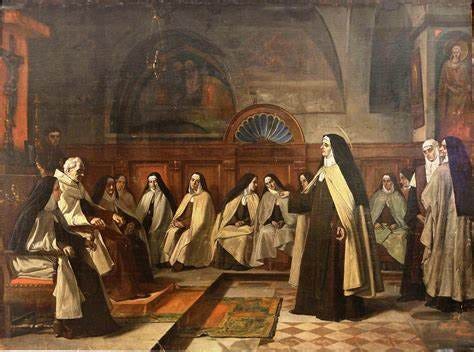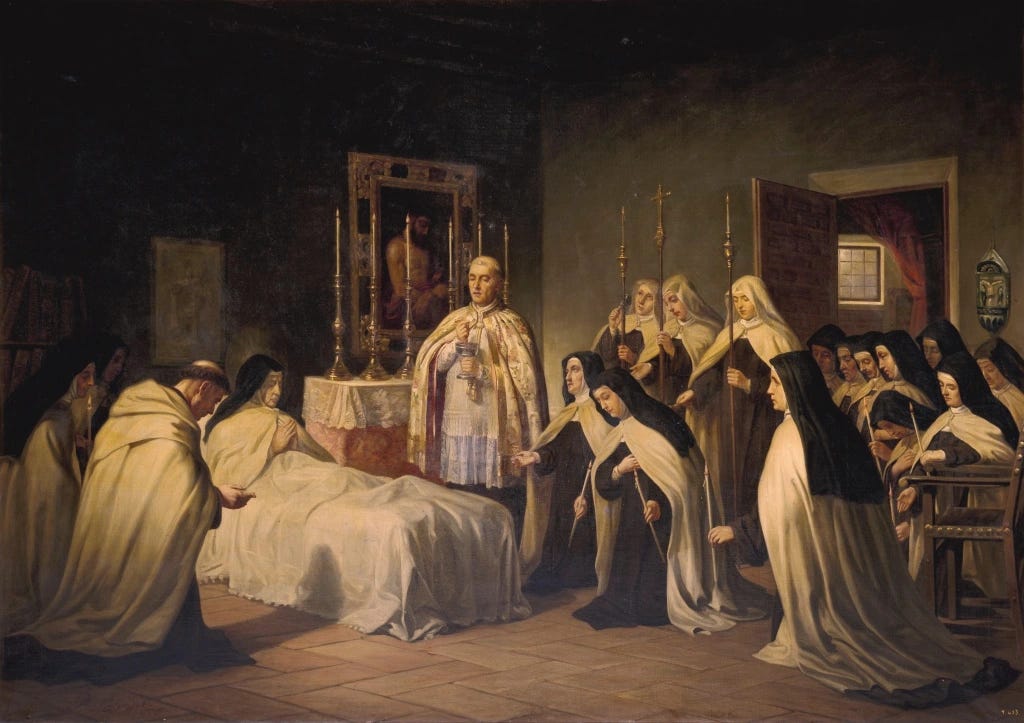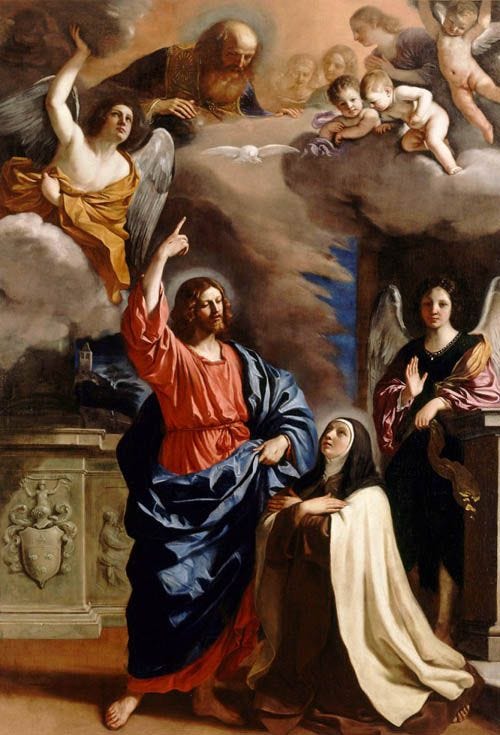St. Teresa and The Mansions, Part 1: A Brief Introduction.
Part 1. Who is St. Teresa of Avila? And what are the Mansions?
Well, my dear readers, I've decided to journey into the Interior Castle, and I’ve decided to take you along with me.
I must confess that for many years I have been intimidated by the works of both St. Teresa of Avila and St. Catherine of Siena. Yet, in a baffling occurrence that defies explanation, I am currently reading both "The Dialogue" and "The Interior Castle" at the same time.
Before delving into the details of the Mansions, I would like to begin with a brief overview, starting with an introduction to St. Teresa herself.
Please note, this is a brief introduction. Many details are omitted.
Who was St. Teresa of Avila?
Teresa of Ávila (1515 - 1582) was a Spanish Carmelite nun and mystic who became the central figure of reforming the Carmelite Order.
She was born into a Catholic family and raised in a devout home. In her own words, she says she became lukewarm in her faith due to being enamored with popular fiction. As she became worldly and vain, her devout father became worried, and so he sent her to a pious school. Eventually, she joined the religious life, entering into a Carmelite convent that was, at the time, very lax in its rule.
As her spiritual life deepened and she became aware of her own lukewarmness, she resolved to found a "reformed" Carmelite convent, correcting the laxity which she found in her own convent.
With permission, St. Teresa established a small convent called St. Joseph’s, but its extreme poverty caused a scandal among the citizens of Ávila. It was in danger of being suppressed by the local authorities. However, the approval of the local bishop, and the well-ordered existence & purpose of the convent, eventually turned local animosity into approval.
She received papal sanction for her principles of absolute poverty & renunciation of ownership of property, which she proceeded to formulate into a constitution. Her plan was to revive the earlier/stricter monastic rules, supplemented with some new regulations. Teresa spent the first few years engaged in prayer and writing.
She received a patent from the Carmelite General to further establish houses of the new order, requiring many visitations & long journeys across nearly all of Spain.
As part of the original patent, Teresa was given permission to set up two houses for men. She convinced two Carmelite friars, John of the Cross and Anthony of Jesus, to help. They founded the first monastery of Discalced Carmelite brothers in Duruelo in 1568.
Unreformed members of the Carmelite order began to greatly suppress and persecute Teresa and her supporters. Her appeals to King Philip II of Spain eventually secured relief from this persecution. In the last 3 years of her life, she was able to found more reformed convents.
Her final illness overtook her on one of her journeys. Her last words were: "My Lord, it is time to move on. Well then, may your will be done. O my Lord and my Spouse, the hour that I have longed for has come. It is time to meet one another."
This portrait by Sir Peter Paul Reubens is thought to be the most true to her appearance. It is a copy of an original 1576 painting of her when she was 61.
Her writings include:
1. “Autobiography,” written at Avila (1562- 1565), published posthumously.
2. “The Way of Perfection,” published in 1566. Written to teach her nuns how to progress through prayer and meditation.
3. “The Interior Castle,” written in 1577, published in 1588. Inspired by her vision of the soul as a diamond in the shape of a castle containing 7 mansions, which she understood as the spiritual journey through 7 stages, ending in union with God.
What are the Mansions?
‘The Mansions’ of St. Teresa of Avila refer to stages of spiritual growth and development, which she describes in her book, “The Interior Castle.”
St. Teresa uses the metaphor of a castle with seven mansions to illustrate the soul's progression towards union with God. Each ‘mansion’ represents a different level of spiritual maturity and closer union to God.
Brief Overview of the Seven Mansions
1st - 3rd Mansions
The spiritual life has always been described as a progression through 3 successive stages: the purgative, the illuminative, and the unitive.
St. Teresa’s seven mansions correspond with these three traditional stages. The first three mansions are the purgative stage, or the way of the beginner. These first three mansions involve turning away from sin, active prayer, practicing virtue, and asceticism.
In the third mansions, St. Teresa talks a great deal about aridity and dryness, and the need to persevere through it. This corresponds exactly to what St. John of the Cross calls “the dark night of the senses.”
4th - 5th Mansions
The 4th and 5th mansions correspond to the illuminative way, or the way of the proficient.
This is the beginning of mystical or supernatural prayer. In the beginning, much effort is needed, but our efforts will always be lacking until the Lord Himself comes to work in our soul. This stage has a more supernatural character, as it is God’s doing, and less of our own effort. There is a noticeable turning inward, a turning away from the world, and a growth in interior recollection.
6th - 7th Mansions
The 6th and 7th Mansions correspond to the unitive way, or the way of the perfect.
St. Teresa compares the spiritual life to the betrothal process. First, the couple gets to know each other in arranged and supervised meetings. Then they exchange gifts as a sign of esteem and affection. Then they fall in love. Then they join hands. Then there is the betrothal, followed by the marriage.
The 6th mansion is “the betrothal,” and the 7th mansion is “the marriage.”
The 6th mansion is characterized by an acceleration/intensification of purification.
This corresponds exactly with what St. John of the Cross calls “the dark night of the soul,” (as distinguished by the earlier dark night of the senses). This is a second, greater purification in which vices of the soul are eradicated; a deeper level of purification that gets at the roots. This purification happens through interior and exterior trials. It is normal during the dark night of the soul to experience temptations against the theological virtues of faith, hope, and charity; this is because these virtues must be tested in order to be strengthened. These trials are the means that purify us, the means by which we are prepared for the marriage.
In the 6th Mansion, St. Teresa describes an odd state of “suspension,” in which one feels a great desire for heaven but is not in heaven; they have no taste for the world, yet are ‘stuck’ in the world; they are in a strange ‘in between’ place where they want to fly to heaven by cannot.
In the 7th Mansion, this feeling ceases as the soul comes into total conformity with the will of God. The soul is now willing to endure whatever God wants for as long as He wants. It loves His will, wants His will, prefers His will, desires His will, to such an extent that the soul is indifferent to its own desires.
To Be Continued!
Going forward, we will examine the mansions in more depth and in St. Teresa’s own words.










